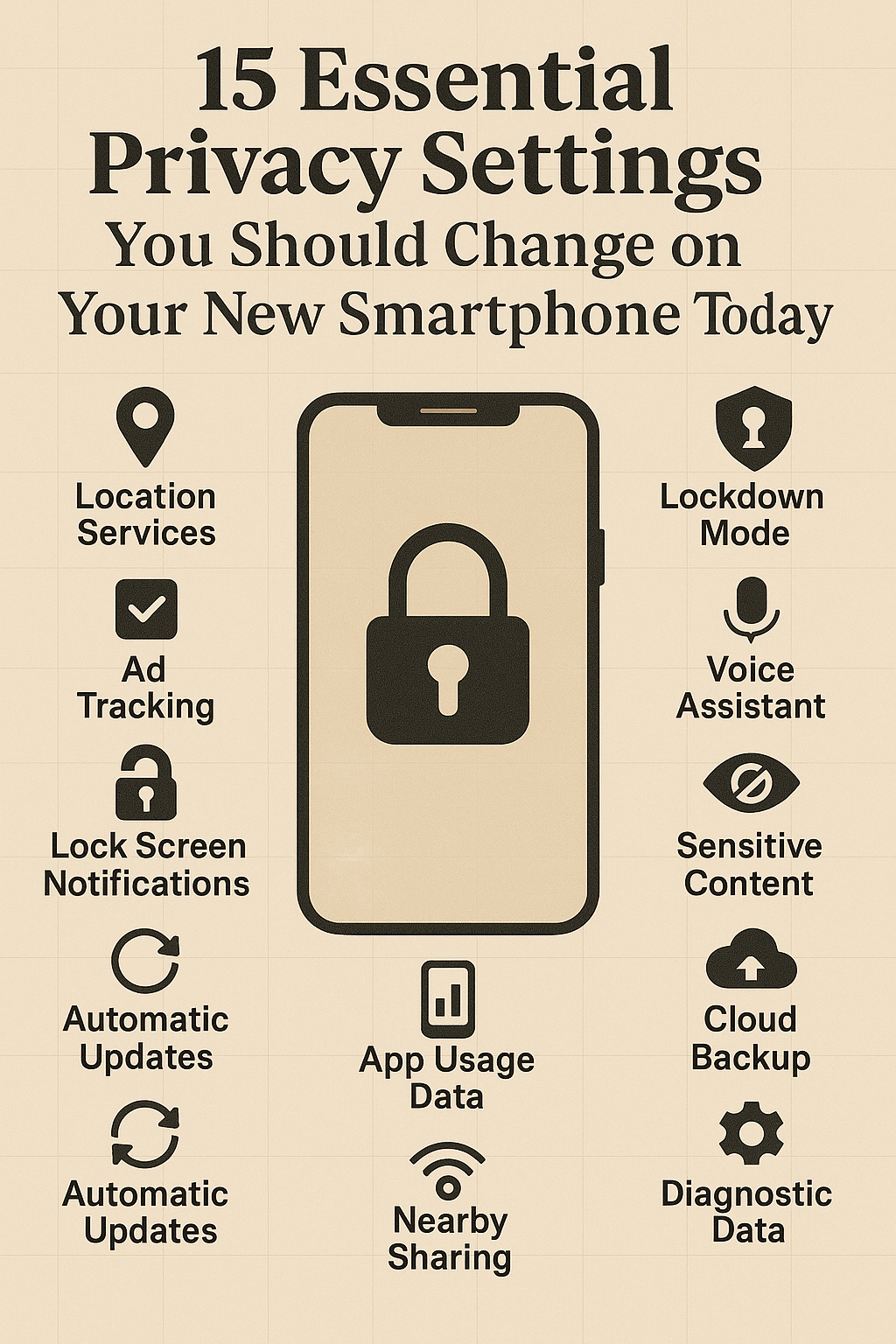Why Smartphone Privacy Matters
The Privacy Risk of Default Settings
Your new smartphone is collecting data from the moment you power it on. Default settings prioritize convenience and functionality over privacy, putting your personal information at risk. Here's why taking control matters:
• 95% of apps collect some form of personal data
• The average app shares your information with at least 6 third parties
• Smartphone-targeted attacks increased by 42% in the past year
• Default settings typically grant maximum permissions to apps
The good news? Both Android and iOS now offer robust privacy controls that let you reclaim your digital privacy—if you know which settings to change.
Location Privacy Settings
Control App Location Access
Location data creates a detailed map of your movements and habits. Take these steps to protect your location privacy:
• Review all app location permissions in your device settings
• Set most apps to access location 'While Using' instead of 'Always'
• Use 'Approximate Location' for apps that don't need precise coordinates
• Completely disable location for apps where it's not essential
• Disable Google/Apple location history in account settings
• Regularly clear your saved location data
Essential App Permission Controls
Limit Sensitive Permissions
Your camera, microphone, contacts, and files contain your most private information. Protect them with these actions:
• Audit camera and microphone permissions for all apps
• Set permissions to 'Ask Every Time' for sensitive sensors
• Restrict contact and calendar access to essential apps only
• Review file and storage permissions carefully
• Disable background app activity for non-essential apps
• Check battery statistics to identify apps running excessively in background
Stop Ad Tracking
Prevent Advertising Surveillance
Your digital activities are constantly tracked for ad targeting. Minimize this surveillance:
• Android: Settings > Google > Ads > Enable 'Opt out of Ads Personalization'
• iPhone: Settings > Privacy > Apple Advertising > Disable 'Personalized Ads'
• Use App Tracking Transparency controls on iOS to block cross-app tracking
• Reset your advertising ID monthly
• Install a tracker-blocking browser like Firefox Focus or Brave
• Clear cookies and site data regularly
Protect Your Physical Device
Biometric and Lock Screen Security
Physical access to your unlocked phone bypasses all privacy protections. Secure your device:
• Enable the strongest biometric authentication available
• For facial recognition, disable convenience features that weaken security
• Configure lock screen to hide notification content when locked
• Disable sensitive app notifications on lock screen entirely
• Enable Find My Device/iPhone for remote wiping if lost
• Set automatic device wiping after multiple failed unlock attempts
Network Privacy Protection
Secure Your Connections
Your network connections can leak data even when apps are secure. Protect your network privacy:
• Disable auto-connect to WiFi networks
• Enable MAC address randomization for WiFi connections
• Turn off Bluetooth when not actively using it
• Consider using a reputable VPN service
• Disable nearby device scanning features
• Enable encrypted DNS if your device supports it
• Use Airplane Mode when privacy is critical and connectivity isn't needed
Digital Assistant Privacy
Control Voice Assistants
Siri, Google Assistant, and other voice services can compromise privacy. Secure them with these steps:
• Disable always-listening 'Hey Siri' or 'OK Google' features
• Activate assistants with button press instead of voice
• Delete stored voice recordings in assistant settings
• Disable personalization features that require extensive data collection
• Review and limit which apps can integrate with your voice assistant
• Consider disabling the assistant completely in sensitive environments
Ongoing Privacy Maintenance
Privacy Isn't Set-and-Forget
Privacy requires regular maintenance as apps update and settings change. Stay protected with this routine:
• Enable automatic app updates to get security patches
• Set quarterly calendar reminders for privacy audits
• Regularly uninstall unused apps to reduce your data exposure
• Check for new privacy settings after major OS updates
• Use secure alternatives for sensitive activities (Signal, ProtonMail, etc.)
• Balance strict privacy with functionality—adjust settings that interfere with features you need

